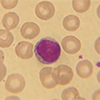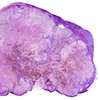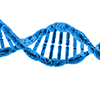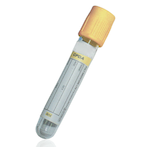Cortisol
Specimen Volume
5 mL bloodSample Preparation
Centrifuge
Turnaround Time
1 daySample Processing In Laboratory
Usual
Sample Stability
Store at 4 ºC for up to 4 days. For longer periods store at -20 ºC.
General Information
Cortisol, also called hydrocortisone, is an organic compound belonging to the steroid family that is the principal hormone secreted by the adrenal glands. It has two primary actions: it stimulates gluconeogenesis—the breakdown of protein and fat to provide metabolites that can be converted to glucose in the liver—and it activates anti-stress and anti-inflammatory pathways. It also has weak mineralocorticoid activity. Cortisol plays a major role in the body’s response to stress. It helps to maintain blood glucose concentrations by increasing gluconeogenesis and by blocking the uptake of glucose into tissues other than the central nervous system. It also contributes to the maintenance of blood pressure by augmenting the constrictive effects of catecholamines on blood vessels. Cortisol is secreted in response to adrenocorticotrophic hormone (ACTH) which is released from the anterior pituitary gland. Cortisol levels normally fluctuate throughout the day and night in a circadian rhythm that peaks at about 8 AM and reaches it lowest around 4 AM.
Please see QEHB Pathology Departments - Adrenal Insufficiency Guidelines for adrenal insufficiency guidelines
Patient Preparation
- Cortisol is stimulated by stress, therefore it is usually recommended that for a single random or morning sample, the patient should be resting and unstressed.
- The collection time should be noted on the request form.
- Samples from patients receiving high biotin doses (i.e. >5 mg/day) should be taken at least 8 hours post dose.
- Pregnancy, contraceptives and oestrogen therapy give rise to elevated cortisol concentrations.
- Samples from patients treated with prednisolone, methyl-prednisolone or prednisone may give falsely elevated concentrations of cortisol.
Notes
Measurement of cortisol is used primarily to diagnose and monitor the treatment of Addison’s disease and to diagnose Cushings syndrome, disorders of hypocortisolism and hypercortisolism, respectively. Cushing's syndrome is caused by prolonged exposure to elevated levels of either endogenous glucocorticoids or exogenous glucocorticoids, whilst Addison's disease is caused by damage to the adrenal gland. Cortisol is bound to cortisol-binding globulin (CBG) and albumin with only the free (unbound) fraction is biologically active. Serum total cortisol may be influenced by CBG and care is required in the interpretation of results in situations where concentrations of CBG are altered. In hyperoestrogenic states, for example during pregnancy, with exogenous oestrogens or with the use of oral contraceptives, [CBG] is increased resulting in an elevated total [cortisol]; CBG may also be increased in hyperthyroidism, diabetes and in certain haematological disorders. CBG may be decreased in familial CBG deficiency, hypothyroidism and protein deficiency states such as severe liver disease and nephrotic syndrome.
Abbott Alinity cortisol assay has 16-18% cross reactivity with prednisolone
Reference Range
Random cortisol
The reference range for cortisol (before 10am) is taken from the Alinity kit insert and is 102 – 535 nmol/L.
Short synacthen test
The current cut-off used for a short synacthen test (SST) is 450 nmol/L. This cut-off was derived from a paper in 2013 (El-Farhan et al1) which studied the response to synacthen in healthy volunteers in Gen 2 immunoassays vs GC-MS . This study included the Abbott Architect platform (uses the same assay formulation as the Alinity analysers) which showed good correlation of the Gen 2 assay to GC-MS. The bias of immunoassays to GC-MS was overall positive. The 2.5th percentile of the geometric mean of post-ACTH stimulation cortisol concentrations for the Abbott assay were 430 nmol/L (Male) or 416 nmol/L (Female) compared to the cut-off of 420 nmol/L for a GC/MS method. It was therefore decided to keep the SST cut-off to 450 nmol/L.
(1El Farhan et al (2013). Method-specific serum cortisol responses to the adrenocorticotrophin test: comparison of gas chromatography-mass spectrometry and five automated immunoassays. Clin Endocrinol 78(5): 673.)
Source of Reference Range
Manufacturer's kit insert (Abbott Alinity)Specifications
-
EQA Status:
NEQAS
- EQAS Scheme: Yes








